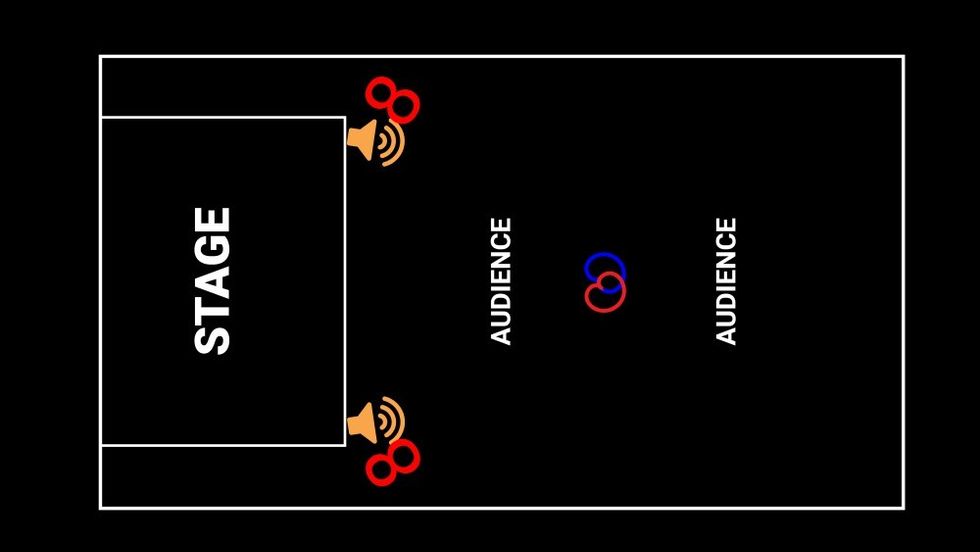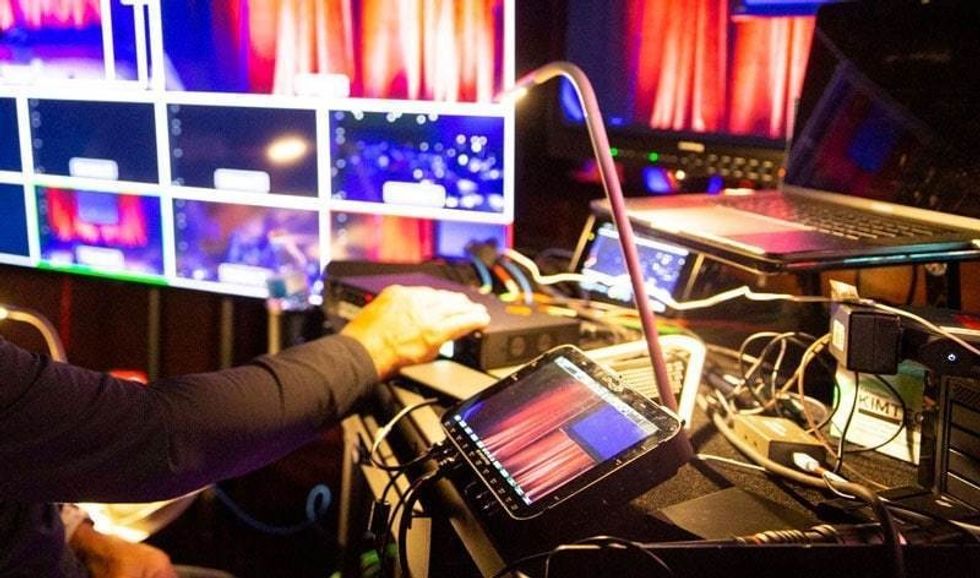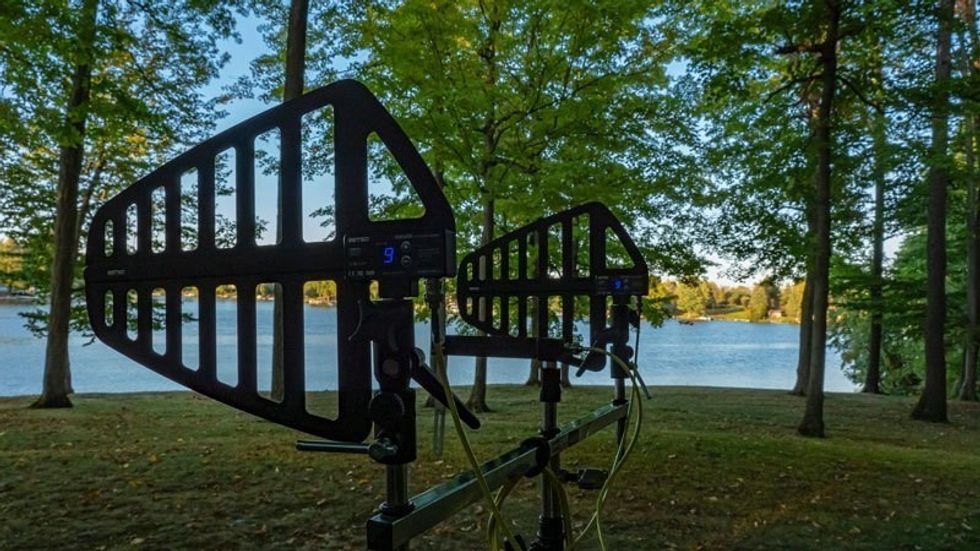Essential Tips for Recording Production Sound for Comedy Specials
A sound workflow can help you navigate any potential challenges.
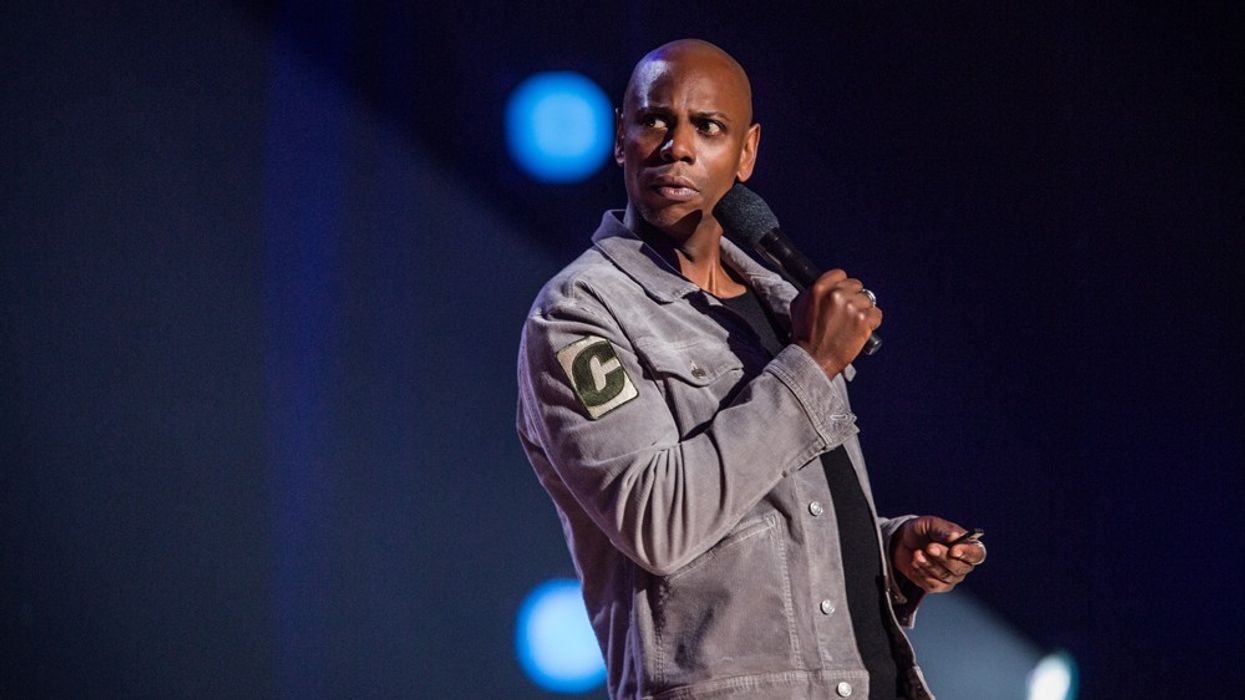
Recording the production sound for a comedy special can pose several challenges not seen on typical video shoots. Not only do you need to capture the comedian’s dialog cleanly, but also the audience noise in the room as well. The process can become even more difficult when the venue’s PA system is overpowering the room the audience is in.
Over the years, I've now done several comedy specials and albums and learned a few tricks along the way to help improve the quality of recorded sound.
Here is my approach to recording the sound for a comedy special.
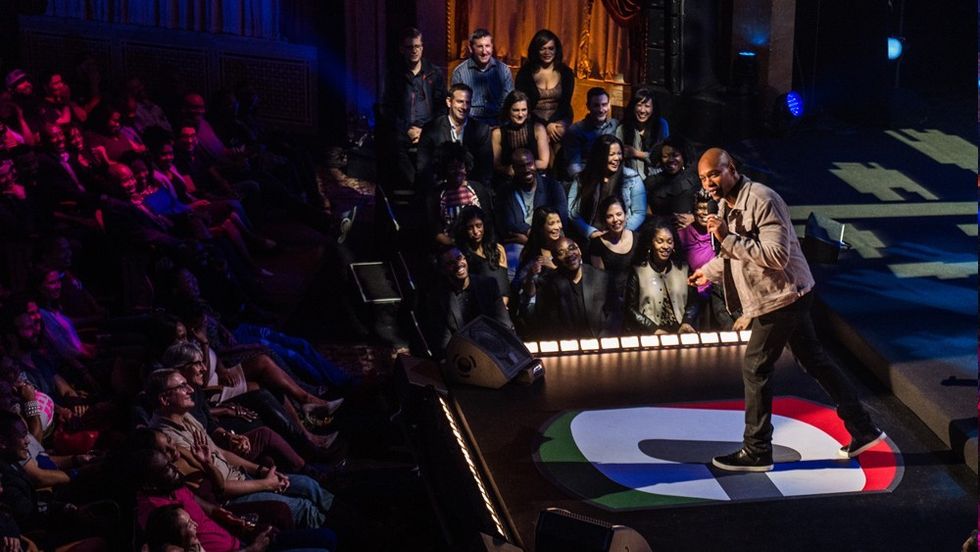
Comedian’s Mic, Handheld Dynamic for Dialog
The primary source of sound for all of the comedian’s dialog is going to be a handheld mic. The same microphone that is feeding the venue PA system. Whether that's a hardwired or wireless mic will depend on the production. But wireless mics tend to be preferred for their visual form factor and the comedian's comfort.
Either way, you’ll want an isolated feed of that microphone before ever touching the venue's sound system. If it’s hardwired, a transformer isolated splitter, like the Art Pro Audio ProSplit, is best practice. It gives you isolation between audio gear like consoles, amplifier racks, recorders, and remote towers to eliminate buzz and hum due to ground loops. If it’s wireless, you’ll want a separate receiver giving you an independent feed.
Dynamic microphones tend to perform especially well in this instance, for their ability to reject unwanted bleed from the audience. This also makes them far less prone to potential feedback issues from the PA system in the venue than you’d get from their condenser mic counterparts. Some standout options include the Shure Sm58.
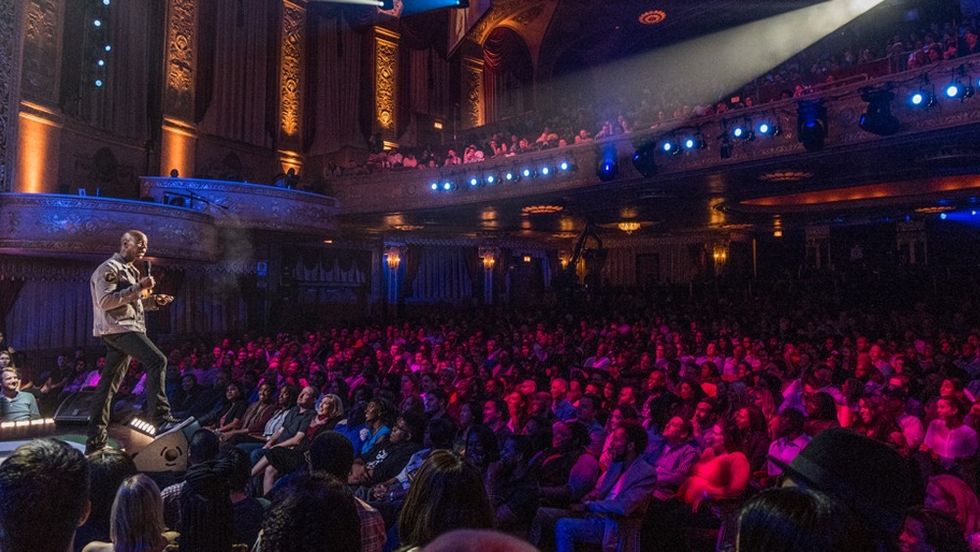
Crowd Mics for Audience Reactions
One of the most important parts of any comedy performance is the reactions from the audience, but it's also one of the most challenging parts of recording comedy.
There is a surprising lack of information on recording audiences, but this is what’s worked well for me. The challenge is recording clean audience sounds while rejecting as much PA bleed to prevent the dialog quality from being destroyed. Audiences tend to be very dynamic in their volume levels, so riding their levels helps considerably.
I typically use a zoned audience micing approach and do a minimum of two stereo pairs, with different goals in mind for their sound. Doing so gives you options in terms of audience level.
Primary Audience Mics—Front Pair
For my primary stereo pair, I place them as close to the venue’s main speakers with the null of the mic rejecting as much as possible from the PA. This keeps the PA bleed to a minimum, while still allowing for great audience capture. I love the versatility of the AKG C414 EB microphones for their incredibly transparent sound and multi-pattern flexibility. I’ve found putting the speakers in the null of a bi-directional mic yields a great signal-to-noise ratio between the audience and PA bleed.
Secondary Crowd Mics—Rear Pair
My secondary stereo pair is typically placed a bit further into the audience. As a result, there is more of a reverb tail from the PA, but the direct sound is much quieter. For this pair, my pickup pattern choice changes depending on the venue size and shape.
Generally, I lean towards a cardioid or hyper/supercardioid. Your ultimate goal again is to reject the PA bleed as much as possible, so that will determine whether you can use a spaced pair or XY pattern and how their null points sit in each configuration.
Lavalier Mic
Even though this likely won’t be used as the primary source for the performance, it’s still very relevant for any time the comedian might be off-mic, such as their entrance and exit. This ensures you don’t miss any off-the-cuff interactions with audience members or before they pick up the mic on stage. It also gives you peace of mind of having a backup source on the performer. I suggest getting the lav as close as possible since they will be in a high-noise environment.
My preferred lav is the DPA 4061, but a Sennheiser MKE2 works too.
Sync for Multi-Camera Shoots
With comedy specials typically having high camera counts, making sure they all stay in sync is of the utmost priority. Since each take is typically an hour or more and there are multiple cameras as well as independent audio recording, the use of genlock alongside timecode is needed.
Genlock prevents the cameras from drifting apart from one another by clocking the sensors to match the timecode perfectly. If you aren’t familiar with genlock, you can read more about it here.
I use Timecode Systems Ultrasync Ones and a Wave master clock for this since they're capable of providing cameras with both timecode and genlock. If there is a reference edit being done with a video switcher, I additionally provide timecode to the video recorder on the output from the switcher to ensure its timecode matches the rest of the cameras.
This helps streamline post, allowing for timecode paper edit of the multiple performances into one. However, I still recommend manually slating as a backup sync mark as it never hurts to have redundancy.
Reference Mix & IFBs
Providing a reference mix is helpful for the editor and anyone who might need to listen in on an IFB. It allows them to edit with just the reference audio and sync the multitrack files after the edit is picture locked.
I try to feed this mix to as many cameras as possible, and to the video switcher if that’s part of the production workflow.
RF Distribution & Shark Fins
Every venue is different, and where gear staging and video village may end up could put you a good distance from the stage. To ensure you maintain strong and reliable RF, I recommend the use of RF distribution and remote active shark fin antennas. It might be overkill when it comes to smaller venues, but it sure beats running into interference or drops during the taping.
If you have any additional tips about recording live comedy shows, share them in the comments below.
For more, see our ongoing coverage of Sound Week 2020.
No Film School's podcast and editorial coverage of the Sound Week 2020 is sponsored by RØDE.
